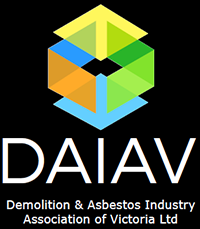In Australia, asbestos was commonly used in the manufacture of building materials from the mid-1940’s until the late 1980’s. During the 1980’s, asbestos containing materials were phased out in favour of asbestos-free products, and a total ban on the manufacture, use, reuse, import, transport, storage or sale of all forms of asbestos came into force in December 2003.
Asbestos can be found in many multi-storey buildings, hospitals, universities, schools, shopping centres, petrochemical plants, and the majority of manufacturing industries.
Asbestos removal works can include the removal and disposal of (friable and/or non-friable) asbestos containing products, the cleanup of asbestos dusts and debris, and the making safe of damaged asbestos containing products.
There are two classes of asbestos removal:
‘Class A’ licence holders are able to remove both friable and non-friable asbestos containing products.
Typical examples of friable asbestos products include:
- Sprayed limpet
- Pipe lagging
- Friable gaskets
- Millboard
- Asbestos contaminated dust
- Asbestos contaminated soil
‘Class B’ licence holders are only permitted to remove non-friable asbestos containing products.
Typical examples of non-friable asbestos products include:
- Asbestos cement sheet
- Non-friable gaskets
- Bitumen-based water proofing
- Vinyl tiles
FROM WORKSAFE COMPLIANCE CODE – ASBESTOS REMOVAL
Friable asbestos: Asbestos material which, when dry, can be crumbled, pulverised or reduced to powder by hand pressure; or as a result of a work process, may become such that it can be crumbled, pulverised or reduced to powder by hand pressure.
Non-friable asbestos: When dry, non-friable asbestos cannot be crumbled, pulverised or reduced to powder by hand pressure.
Removal of asbestos must be carried out in accordance with the requirements of the Occupational Health and Safety Regulations 2017, WorkSafe Code of Practice for Asbestos Removal and relevant industry codes. All asbestos removal workers must be fully trained and ticketed (including asbestos removalist training and refresher training).
All asbestos removal companies must be licenced by WorkSafe, be fully insured, and comply with all state and federal codes and regulations.
A notification must be submitted to WorkSafe Victoria prior to undertaking asbestos removal works.
Asbestos must be transported by a vehicle licensed by the EPA to transport prescribed industrial waste, and disposed of in an EPA approved landfill.
